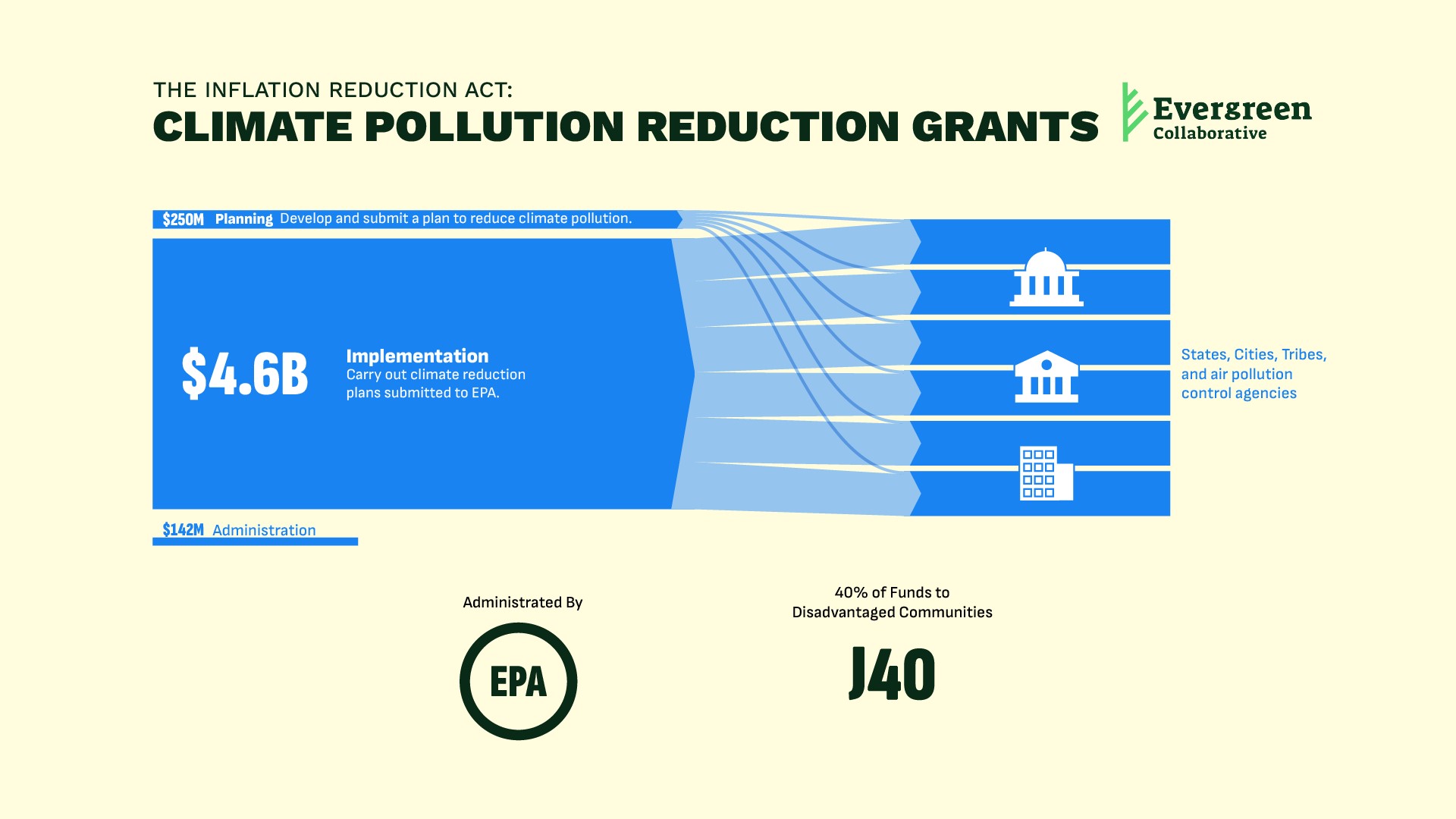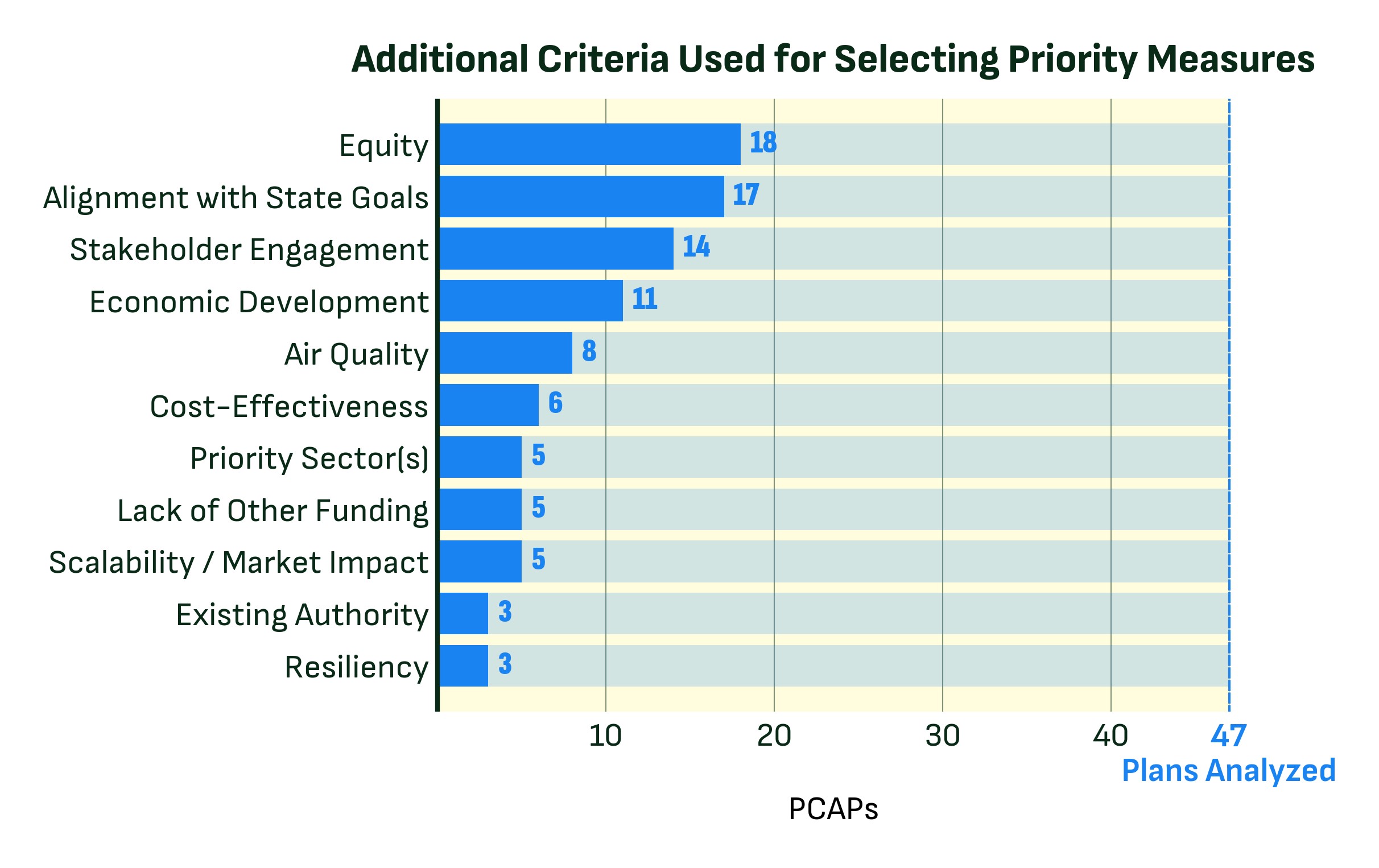What to Expect in this Guide
This guide breaks down one of the Inflation Reduction Act’s most important programs that channels federal funding into states, local governments, Tribes, and territories: the Climate Pollution Reduction Grant (CPRG) program. You can scan through to get a quick overview or take a deeper dive in the linked resources.
Who Is This Guide For?
This resource hub is for advocates, state-level policymakers, and members of the climate movement who want to better understand and champion state climate action. Click on the links below to navigate between different sections, which range from introductory explainers to deeper analyses of the program.
Familiar with the program? Jump ahead to read our latest analysis on the Implementation Grant awardees, announced in July 2024 →
Table of Contents
- What Is the Climate Pollution Reduction Grants Program?
- What Did States Put in Their Proposed Climate Plans?
- What Made for Strong State Climate Plans?
- Which States Were Awarded Funding and What Comes Next?
- More Resources



